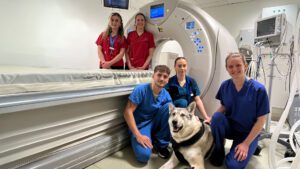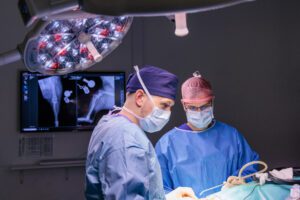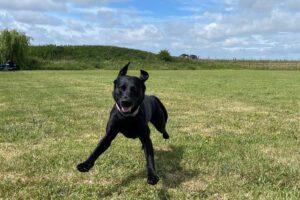Objective
To report the outcomes of dogs undergoing shoulder arthrodesis with the application of 2 locking compression plates (LCPs).
Study design
Retrospective case series.
Animals
Twelve client owned dogs undergoing shoulder arthrodesis using 2 LCPs as the principal method of fixation.
Methods
Medical records were searched for dogs who had undergone shoulder arthrodesis at a hospital between 2014-2021. Inclusion criteria required at least 6 months postoperative follow up and the use of 2 LCPs as the principal method of arthrodesis. Outcomes recorded include clinical assessment, Liverpool Osteoarthritis in Dogs (LOAD) scoring, force plate analysis, and a client visual-analogue scale with at least 6 months follow up.
Results
All shoulders were immobilized with 2 LCPs and no postoperative external coaptation. The duration of follow up was 855.9 days (174-2135). Minor complications were recorded in 2/12 dogs, neither requiring surgical revision. Preoperative to postoperative mean lameness scores reduced from 2.9 to 0.8 (0-5), with 11/12 dogs making a full functional recovery, with a mean long-term LOAD score of 12.9 (4-23). Gait analysis was available in 5/12 dogs, placing a mean of 31.9% of their bodyweight on the operated limb, with a mean symmetry index of 8.7%. Owners scores (n = 11/12) were consistent with a high level of satisfaction (9.6/10).
Conclusion
Shoulder arthrodesis with 2 LCPs was associated with low morbidity and good outcomes in our clinical setting.
Clinical relevance
Canine shoulder arthrodesis performed with 2 LCPs should be considered as a suitable alternative in dogs with severe shoulder joint pathology.












